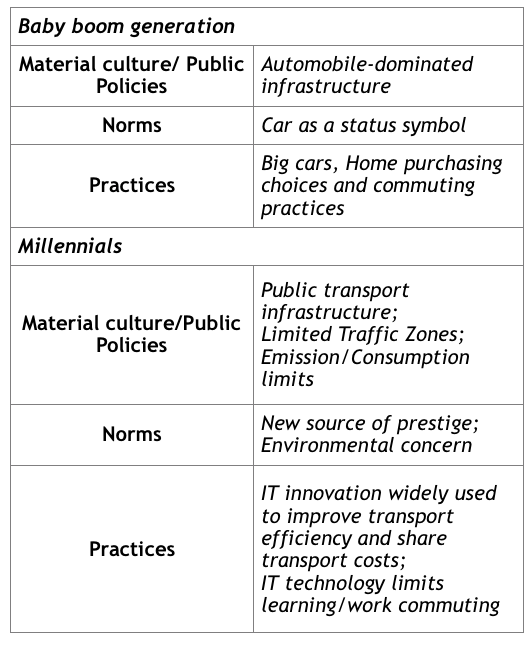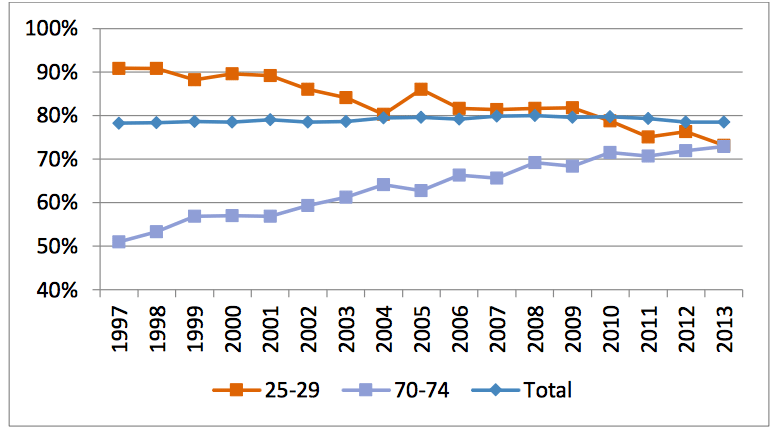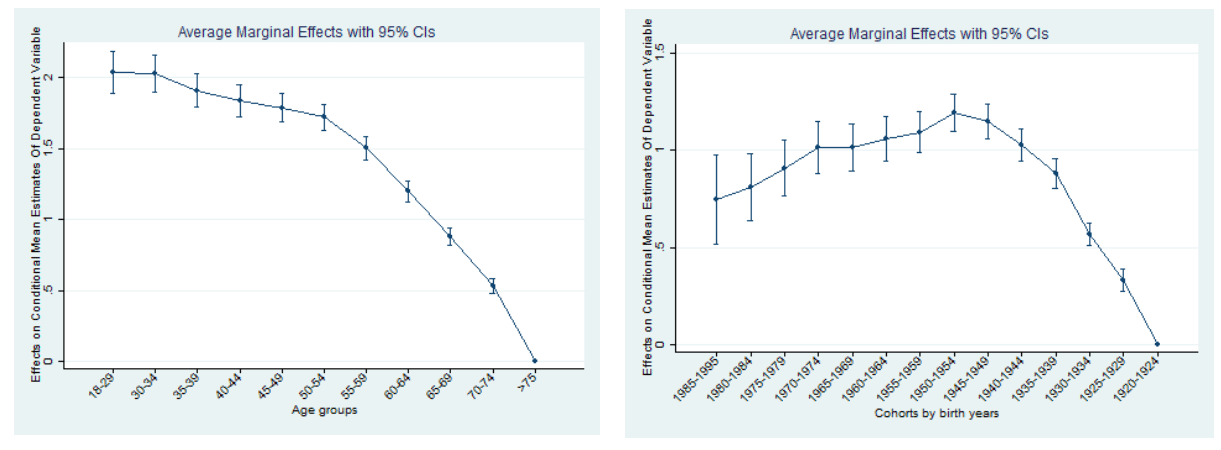
Many countries are experiencing a fast demographic shift, the consequences of which for energy consumption and the environment have been studied but generally undervalued by policy-makers. The economics literature almost universally predicts that an aging population will increase residential energy demand and reduce transport-related energy use: older households spend more on heating and less on transportation because their members stay at home for a larger portion of the day.
However, this causal link is more complex than expected because as different generations progressively reach retirement, we cannot assume that their behavior in old age will be the same. Indeed, different social norms, including individual expectations and aspirations, interplay with material culture and energy practices in shaping individual behavior. Individuals react to pressure from several factors that define the concept of energy culture: sociodemographic transformations (longer life expectancy and smaller family size), economic transformations (income distribution by age and by income category), and changes in lifestyle and environmental attitudes, among which is concern about global warming.
This is particularly important in the case of private transport, where the energy culture of high-income countries is indissolubly linked to a preference for cars. In all Western countries, cars have been perceived as a means of travel giving status, a sense of comfort, control, and freedom. This has been true particularly for the baby boom generation. Nowadays, environmentally friendly attitudes – probably mixed with increasing income inequality among generations – push the younger generation towards different transport mode choices.
Furthermore, by using social media, millennials can find new ways of finding membership in (online) communities where durables and cars do not have the same importance that they had in the past, so they show a preference for sharing or renting cars. Drawing on the energy culture framework (Stephenson et al., 2014), in Table 1 the main drivers of the energy cultures of baby boomers and millennials are compared.

Table 1 – Comparing transport-related energy cultures between generations
The potential shift among younger generations from car preference towards public transport or slow alternatives is therefore particularly interesting, and this paper aims to consider whether this kind of shift can be traced among the younger generations with an empirical application to Italy. The Italian case is particularly interesting because of at least three concurring factors: an almost complete energy dependency, a very high car and motorcycle ownership rate, and a very fast population aging, due also to a steady increase in life expectancy in good health. A growing number of “new” elderly people in Italy seem to be able to access goods associated with comfort and leisure, so a more active lifestyle and therefore a new energy culture call for greater demand for transport.
Because of this demographic shift, several generations coexist, creating different generation-specific energy cultures. On the one hand, the baby boom generation, which grew up in a limitless resource framework, has a marked preference for private mobility and shows a longer driving activity. On the other hand, both older and younger cohorts exhibit a lower propensity for private transport mode. The interplay among these drivers may increase fuel expenditure in the short and medium run – when baby boom householders prevail – and may decrease it in the long run.
The empirical analysis aims to investigate how consumer choices are affected not only by age but also by generational effects, among other determinants of transport fuel consumption. Cohort effects reflect similarities in experiences and social influences across a particular generation that affect its members’ choices. When only considering age effects on consumption, we assume that people of different generations may demand less fuel as they age. However, if a cohort effect exists, then, for instance, the members of the millennial generation may start from a lower base level of consumption and continue to demand relatively less fuel at every stage in their lives.
The paper uses data from the Household Budget Survey (IHBS), published by the Italian Statistical Office (ISTAT) for the period 1997-2013. Households are grouped according to the head of household’s year of birth using five-year age classes along with transport-related expenditures and vehicle possession by type. Figure 1 shows the remarkable change in behavior across age classes; for young householders there is an evident drop in the share of car ownership (from 90% in the late nineties to 75% in 2013), whereas a steady increase is evident for elderly householders (from 50% to more than 70% in the same period).

Figure 1 – Share of households owning at least one car; young vs old householders (1997-2013, %) Source: Authors’ elaboration on IHBS data, republished with permission
Because of the high incidence of zero fuel expenditure – about 30 percent of the authors’ observation – the paper uses a double hurdle model (Eakins, 2016) to estimate household’s fuel expenditure per adult as a function of age and cohort classes defined according to the household head characteristics. Other determinants are sociodemographic factors – such as family type, education level, and employment status – and the possession of alternative vehicles, such as motorbikes. Locality choices (both macro-regions and urban density), total household expenditure, and expenditure on public transport are among the key regressors.
The paper’s findings show that male householders with dependent children, higher education, and a monthly income (either wage or pension) are associated with a higher probability of choosing private transport, confirming the findings in the empirical literature of a link between the main demographic and income variables and transport fuel expenditure. Most importantly, results confirm that fuel consumption steadily declines with age, meaning that with population aging, a decrease in total fuel demand can be expected (Figure 2).

Figure 2 – Marginal effects of age and cohort classes on per adult household fuel expenditure (Republished with permission)
On the other hand, findings also show that cohort effects present an inverted U shape: generations born after WWII, including the baby boom generation, have higher fuel expenditure per adult than the newer generations and those born before WWII. This confirms the idea of different transport cultures interplaying within the population, with a strict energy-saving attitude among the older generations and a clear bias towards private mobility for householders born in the fifties and in the sixties. Smaller cohort effects are evident for the younger generation, whose attitude to using shared transport (on either a public or a private basis), declining rates of obtaining driving licenses, and higher environmental concerns have been documented for several countries.
This work is significant as shows that a deep understanding of overlapping energy cultures is a prerequisite for predictions about future mobility trends and policy design that should address the externalities caused by private mobility and at the same time the increasing mobility needs of the elderly.
These findings are described in the article entitled Ageing and private transport fuel expenditure: Do generations matter? recently published in the journal Energy Policy. This work was conducted by Rossella Bardazzi and Maria Grazia Pazienza from the University of Florence.
References:
- Eakins, J. (2016), “An application of the double-hurdle model to petrol and diesel household expenditures in Ireland”, Transport Policy, 47, 84-93.
- Stephenson, J., Hopkins, D. & Doering, A. (2014), “Conceptualizing transport transitions: Energy Cultures as an organizing framework”, Wiley Interdisciplinary Reviews: Energy and Environment, 4(4), 354-364.









